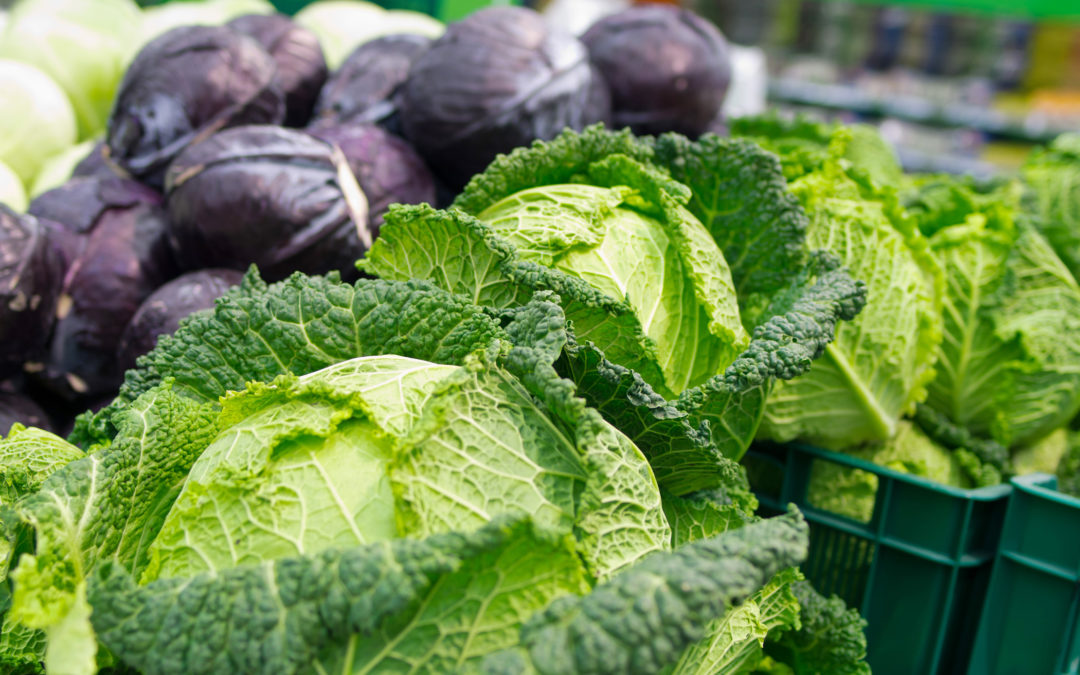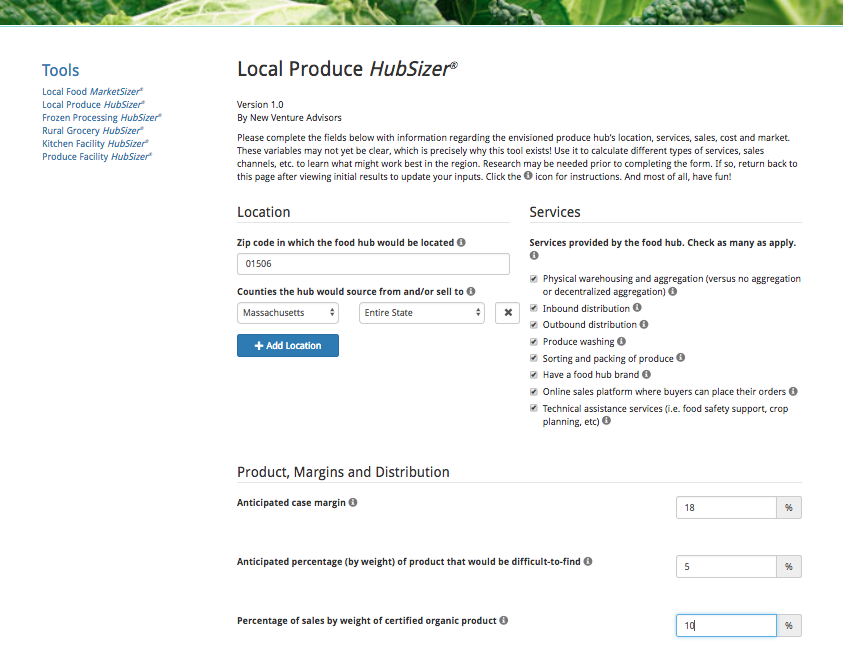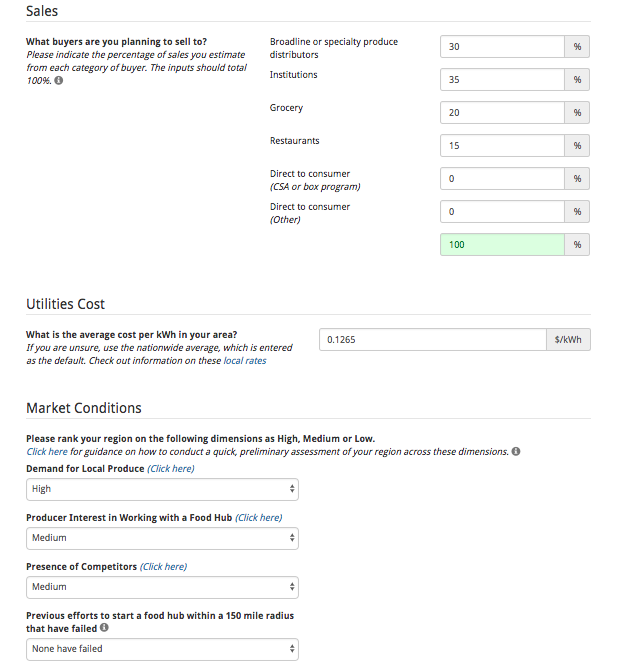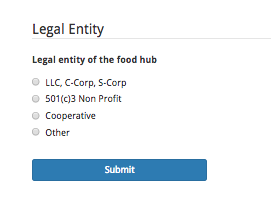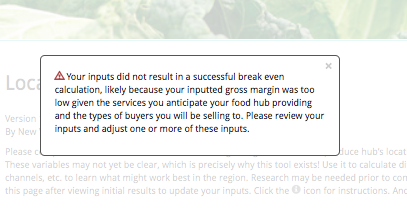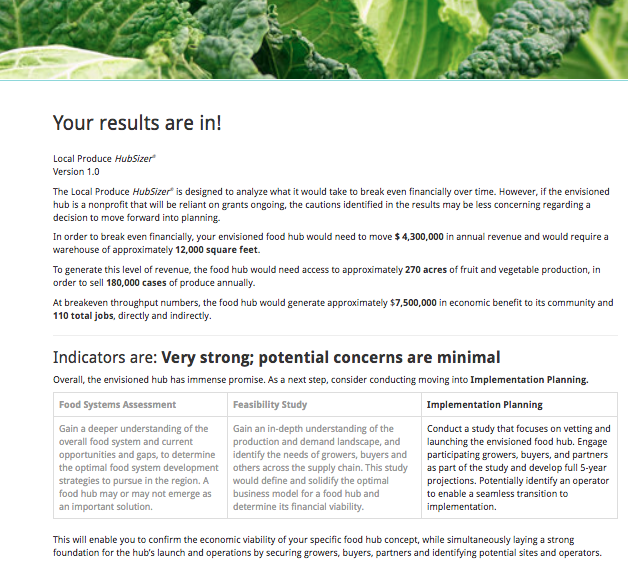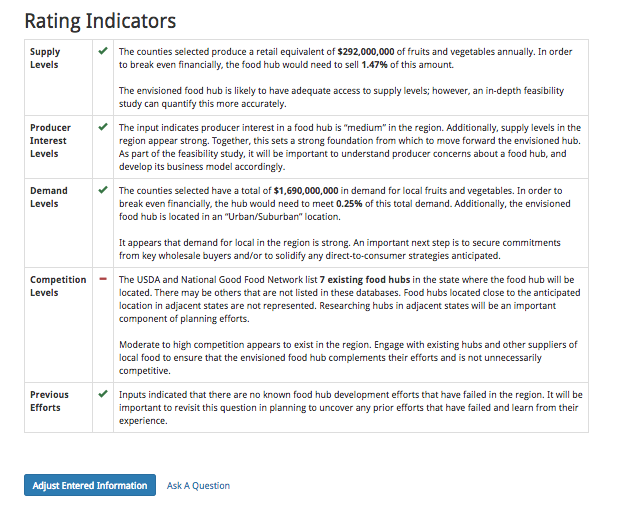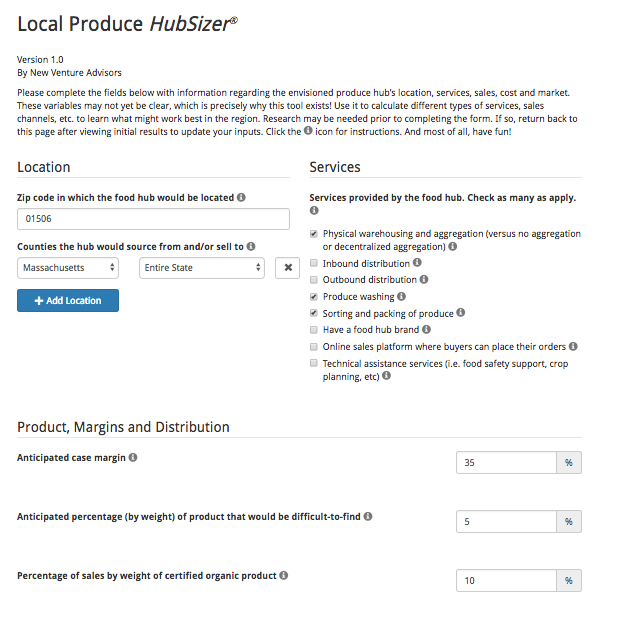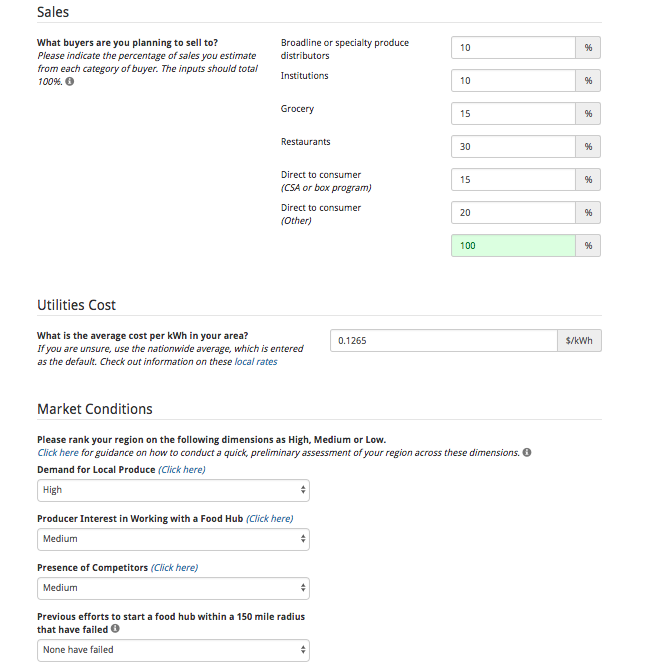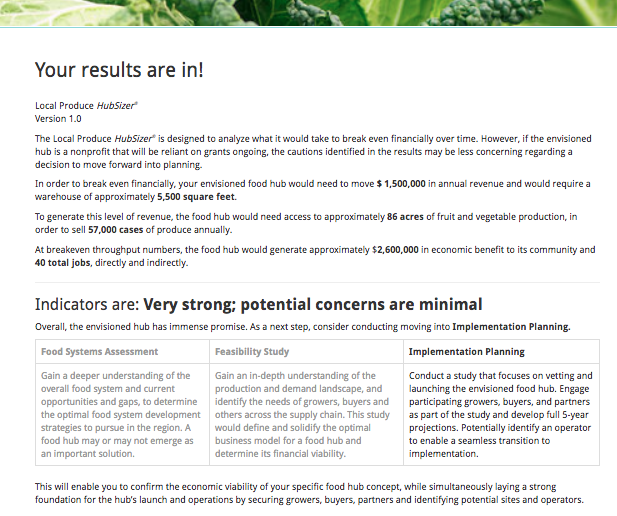A microblog series on the HubSizer® and MarketSizer® tools from New Venture Advisors.
This week we’re looking into how to use the Local Produce HubSizer® tool to estimate the economics and potential markets of a produce food hub. For this post, we’ll take you on the journey that I went through while using this tool: I wanted to start a food hub in central Massachusetts.
I moved to this area a couple years ago and learned about the rich agricultural lands and strong farming communities in this region. Central Mass sits between two small, blue collar cities, Springfield to the west and Worcester to the east. The history of this area can be seen dotted along the rivers throughout the state: enormous, looming and abandoned brick mills are a constant reminder of a more prosperous time for these towns. Would this be a perfect location for a local food hub? Could a food hub connect the region’s current agricultural activity with its industrious history, and help communities gain access to fresh, healthy, local food? In my town there is actually an abandoned 3,000 square foot building that is looking for a new use — could this be the exact right location to breathe new life into a community while supporting our farmers and community at the same time?
My vision for this food hub is multifaceted — I want to aggregate, wash, pack and sell local products (giving farmers access to new markets) but I also want it to have a social mission where we tackle food access for underserved communities and help low-income workers gain job skills (give back to the community and increase healthy food access!). I want to create a true hub of activity for social good, centered around food. I looked to NVA’s Local Produce HubSizer® to get a preliminary understanding of what it would take to create such an exciting venture.
The Local Produce HubSizer® tool estimate sales, acreage and capacity thresholds that are needed in order for various types of food hubs in a given region to break even financially. It will also rate the potential for the hub to be successful using six market indicators related to supply, demand and competition. This tool is only meant for whole, fresh produce so it was perfect for my needs.
Let’s get started, I log in to the NVA Toolsite at www.newventureadvisors.net/tools and click on the Local Produce HubSizer® tool and am brought to this page where I start inputting my estimates:
I put in my zip code for Brookfield, MA. I select every single service a food hub could possibly offer because I suspect farmers would want all of them — and it is part of my vision that this food hub can meet the needs of local producers in a variety of ways. I want to keep a low case margin so that more money goes to the farmer and the hub takes as little as possible from the case price — so I put in 18%. I hope that 5% of my products are niche/specialty veggies and 10% are organic.
As I scroll down, I enter my desired customer information in the sales section of the tool:
The food hub I am envisioning has a social mission to reach as many underserved eaters as possible — this means selling primarily to institutions (like schools) and broadline distributors (who also sell to schools, hospitals, etc) and grocery stores. I reserve a small percentage of my product for restaurants. Finally, I select the legal entity of my food hub: a farmer owned cooperative! And select Submit.
Uh oh. The error message I receive indicates that my 18% margin was too low given all the services I want to provide. I hit the back button and increase my margin to 25% and submit again, here are my results.
Whoa. Even though my result indicators are “very strong”, In order for the food hub I designed to break even financially I would need $4.3 million in annual revenue and a warehouse of 12,000 square feet?!?! This seems impossible. Could the numbers be wrong?
No — they’re not. The scenario we just went through is very common for potential food hub envisioners: they want to DO IT ALL. But the reality is that in order for a facility like this to break even or turn a profit, there must be limitations on what types of services the hub can offer, they must set their case margin high enough to actually pay for the cost of providing all of these services (at or above 30%), or the hub must diversify their customer base to serve entities that are less price sensitive and would pay higher prices. I had selected institutions and distributors as my main customers, both incredibly price sensitive channels. To offer washing, packing, marketing, an online marketplace AND technical assistance services AND serve price sensitive markets all under one roof may prove difficult to fund right out the gate.
Additional results from the tool show that the USDA reports that there are 7 existing food hubs in my state that may be already providing some of these services. Because Massachusetts is a pretty small state, geographically, this may provide too much competition for my food hub.
Back to the drawing board. What if I scale back my services to aggregating, washing and packing, up my case margin, and diversify my target customers?
I up my case margin from 18% to 35% and only select physical warehousing, produce washing and sorting/packing….
Then I diversify my buyer makeup by not relying too heavily on one type of customer but instead selling into many different markets to ensure stability — flipping the focus from institutions to restaurants and direct to consumer outlets where I’ll get higher prices for my products.
A stronger result emerges! In order to break even with this food hub, I would need to make $1.5 million in annual revenue and have a warehouse of approximately 5,500 square feet. In order to generate this level of revenue I would need access to 86 acres of fruit and vegetable production — a much more attainable number! While the numbers are still not quite right for the warehouse I have access to, and the social mission that I want to attain, we’ve gotten much closer to what realistically is possible.
I can continue to play around with the numbers in the tool to get it to meet the requirements and limitations of my potential food hub — and work on making concessions around the services of the hub in ways that enables a margin that is lower than 35%, which would be in a much more comfortable range for me.
It is important to note that none of these results can replace a food system assessment or a feasibility study for your potential facility. But, for someone like me, it can bring me down to earth in order to understand what’s possible and realistic when starting a new business venture like a food hub.
Next week in the Toolsite Spotlight we’ll look at the Produce Facility HubSizer® a similar tool but with a narrower focus on a brick + mortar site and how to use it to aggregate and sell local produce.

